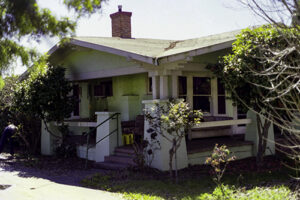Porch Stories
 I grew up in Northern California, where my grandparents’ 1920s bungalow had a wide wrap-around porch. It was the heart of our family. Four generations gathered there to talk, rest, and watch the world drift by. That porch held so many memories that it became a compass for how I understand love and belonging.
I grew up in Northern California, where my grandparents’ 1920s bungalow had a wide wrap-around porch. It was the heart of our family. Four generations gathered there to talk, rest, and watch the world drift by. That porch held so many memories that it became a compass for how I understand love and belonging.
When I traveled to Kentucky in July 2025, I found myself drawn to porches again. I spent a week camping on Nolin Lake, between Leitchfield and Bowling Green. In the dense summer heat, I often escaped by driving Highway 259 and along the road, I began to notice the porches. Some were meticulously kept; others bore the marks of weather and time, but each told a story.
There was something deeply human and familiar about these spaces. A single chair, a cluster of potted plants, a stack of tools, or a refrigerator sitting proudly out front revealed something about the people who lived there. Every porch felt like a gateway between private life and the rest of the world, a stage where daily life played out with quiet honesty.
Through photographing them, I observed how people shape space to reflect who they are. The porches of central Kentucky reminded me that beauty often hides in the quiet, unassuming spaces where everyday life unfolds.
Exhibition: Nov 17 – Dec 12, 2025, Reception: Dec 5, 5–7 p.m.
This Gallery, University of Wyoming, Visual Arts Building
